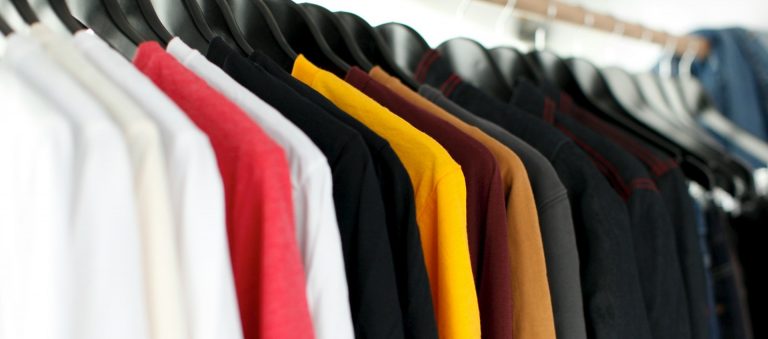As you probably already know, the jacket you bought cost a lot more than what was on the price tag.
For example, you have yet to pay the price for trillions of litres of water and the carbon dioxide emissions caused by the industries that produced it.
Still, it’s reassuring when a retailer says their brand has a strong commitment to “green values,” “sustainability” or even “circularity” — presumably because they claim to have signed up to some global pledge on environmental awareness and care.
But do these pledges actually mean anything? Greenpeace says they don’t, warning in a recent report that we should all be highly sceptical of most of these claims made by major fashion brands.
And regulators, including in the EU and the US, are increasingly scrutinising these green product claims and coming down on violators, who may even face legal action.
Even when retailers claim their products are “eco-friendly,” “carbon neutral” or “circular,” which suggests they recycle old fibers into new ones, it’s hard to know whether consumers can trust them, they say.
“Sustainability sells,” Greenpeace said of the $2.4 trillion global fashion industry, warning that the industry’s statements don’t always mean much. Greenpeace argues that in many cases it’s just “greenwashing” – when companies appear to be eco-friendly while continuing environmentally harmful practices behind the scenes.
“Fashion brands’ marketing may make it seem as if their actions are making a difference, but what lies behind what is being told to fashion consumers in the labels used to sell the ‘sustainability’ of clothing?” the Greenpeace report asks.
The clothing industry places a huge strain on the environment, responsible for an estimated 2-8% of global greenhouse gas emissions, at least in part due to coal-fired power plants and petroleum-based fabrics such as polyester, nylon, lycra and spandex.
To make matters worse, low-cost clothing is often made from synthetic fibers and polyesters derived from petroleum and oil production. These synthetic fibers do not biodegrade. In fact, the synthetic fibers in cheap clothing can pollute water sources after being discarded.
Microplastic fibres, which are used in polyester fabrics, can also be released during manufacturing and when clothes are washed. These fibres can end up in rivers and streams and eventually into the ocean.
“From a consumption perspective, textiles have the fourth-largest impact on the environment and climate change on average,” Lars Fogh Mortensen, a circular economy and textiles expert at the European Environment Agency (EEA), said in a recent article in Elle magazine.
Provided by RedCircle
Greenpeace said fashion brands often try to confuse customers with fake “eco-labels” that are simply named after their own sustainability programs, rather than being verified by a third party.
They also provide little information about their supply chain or materials to back up their claims, instead claiming to be “circular” by recycling fabrics from other industries, when in fact their used fibres are dumped in countries in the Global South.
As if to underscore the scale of the problem, a 2020 European Commission study found that 53% of environmental claims investigated in the EU were vague, misleading or unsubstantiated, and 40% were unsubstantiated.
In response, the EU has drawn up 16 bills aimed at cracking down on fashion waste and greenwashing, which Greenpeace says will “help make sustainable products the new norm”.
One key proposal, the Green Claims Directive, aims to tackle greenwashing by setting requirements on how environmental claims can be substantiated and introducing rules on eco-labelling.
Meanwhile, a separate proposed directive on corporate due diligence aims to hold companies accountable for labour and environmental abuses throughout the value chain.
At least two US states, New York and Washington, have proposed fashion sustainability bills that would require companies to report on their environmental impact, with New York also requiring carbon emissions reporting. The New York bill has been backed by a number of celebrities, including actors Jane Fonda and Leonardo DiCaprio.
Meanwhile, in the UK, fashion retailers ASOS, Boohoo and George at Asda have pledged to “only use accurate and clear green claims” following an investigation by the Competition and Markets Authority (CMA), which is also looking into greenwashing of household products.
Fashion giant H&M, one of several companies named by Greenpeace, along with Shein, Decathlon and Zara, said it was committed to transparency and supported the regulator’s efforts.
“Transparent sustainability information is crucial as it empowers customers and puts pressure on companies, ultimately contributing to positive change,” H&M’s media office told ThinkLandscape in an email.
“This is a complex area, but we are confident that a carefully crafted regulatory framework can contribute to the positive development of our industry.”
Regulators are starting to make efforts, but more needs to be done to hold an industry “designed to maximise profits at all costs” to account, said Dilys Williams, director of the Centre for Sustainable Fashion at London College of Fashion.
“Dramatic action must be taken to rebuild our society to include equity, racial and climate justice,” Williams wrote in an essay published in the Guardian.
“Fashion is something we all take part in. It is a set of social, creative, economic and cultural activities that can contribute to the world, not just take from it.”


